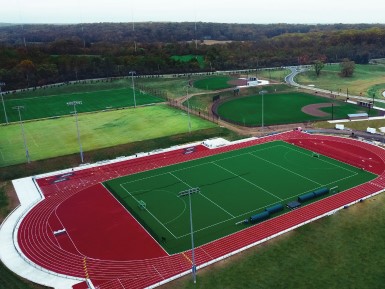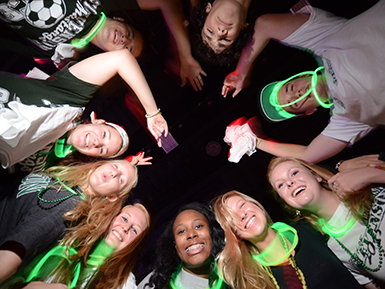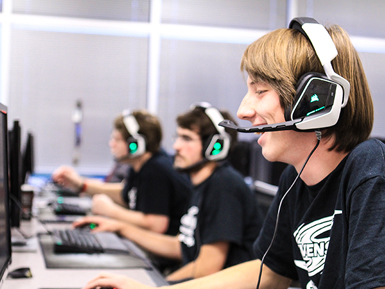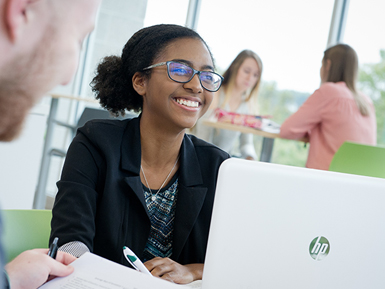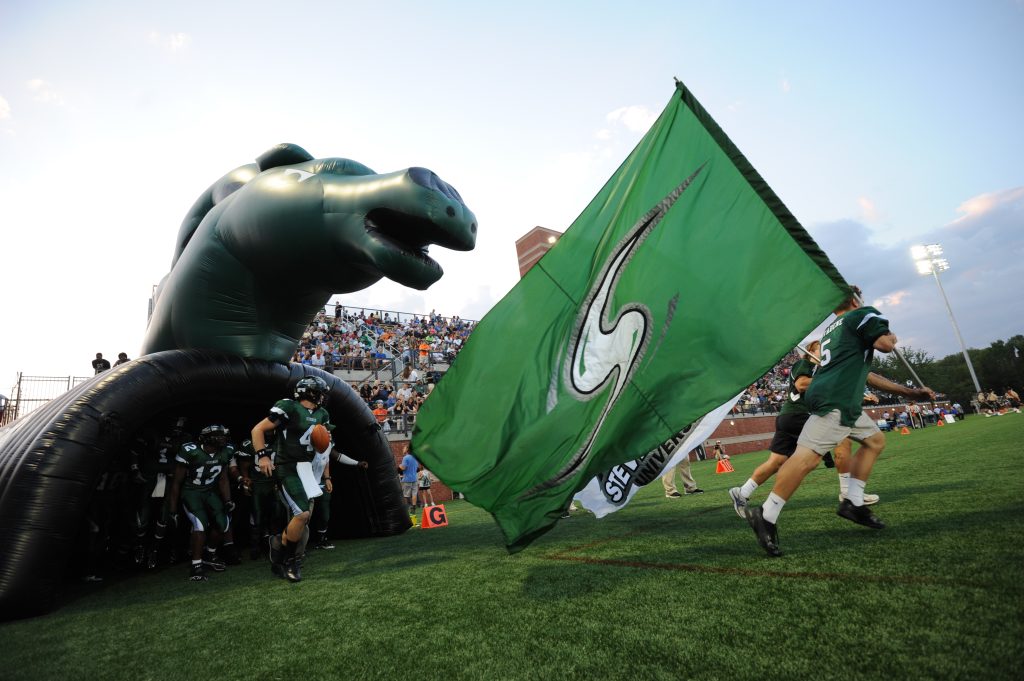By Maddie Buher ’25
Introduction
As an athlete, I have had my fair share of coaches that I admire and those that I am grateful that I am no longer on their team. Nonetheless, each coach I have encountered has motivated me in some way either out of inspiration or out of spite. Unfortunately, every athlete will face these coaches, and there are always key instances that stick with an athlete, whether good or bad. A coach is an athlete’s greatest influence and is one of the first people to either build an athlete up or break them down. This means coaches have the power to either empower their athletes and improve their self-confidence and self-esteem or deteriorate them. It is no secret that coaches need to have tough love and be assertive, as it is a way to get athletes to work harder, get motivated, and see results. Unfortunately, coaches cannot always know what is happening behind the scenes with athletes and see the effects of their words and actions.
Coaching Male Athletes vs. Female Athletes
Before learning how to improve the confidence of female athletes specifically, coaches first need to understand the differences between coaching female athletes and male athletes. In the sports community, at the collegiate level, men are head coaches for 66% of women’s soccer, 33% of softball, 43% of women’s basketball, 55% of women’s golf, 44% of women’s volleyball, and 69% of women’s golf (USAFacts Team, 2023). In men’s sports, 95% of NCAA teams had male head coaches in 2020, and this number has not changed drastically since. As statistics show, men dominate head coaching positions at the collegiate level.
At this level, it is important to realize that male and female athletes vary in their initial levels of confidence in sports. There are clear physical boundaries between the performance of male and female athletes, and this translates to their confidence on and off the field. Male athletes have been found to consistently demonstrate higher confidence than female athletes, which can stem from natural strength and ability (Hays et al., 2009). Confidence in female athletes is often deteriorated by negative feedback such as criticism from coaches/teammates and even hecklers at sports events. Male athletes, on the other hand, use this negative feedback as fuel to their egos and use it as motivation. For example, in 2019 at the U.S. Open, Daniil Medvedev provoked a hostile crowd by giving them the middle finger, followed by booing (Pingue, 2019). Medvedev stated that the crowd’s negative remarks only motivated him more to perform as he ended up reaching the finals that year. On the contrary, in 2022 during her match at the Indian Wells Masters, Naomi Osaka was brought to tears during a match after being booed and heckled by crowd members (Bengel, 2022). Osaka had been fighting mental health struggles before this match, so the negative crowd responses ended up saddening her, instead of motivating her like Medvedev was. While female and male athletes alike can use criticism as fuel to their fire, it is not uncommon for emotions to overcome an athlete.
Since there are far more male collegiate coaches than female coaches, it is easy for male coaches to mentor their female athletes just as they were coached. Once a male athlete becomes a coach, he will want to mentor his athletes just as he was coached, despite whether he is overseeing male or female athletes. Much like parenting, a coach will base their coaching style based on how they were brought up and how effective it was. Male coaches must understand the natural differences between male and female athletes and how they should be coached differently. For example, as Anson Dorrance, the UNC women’s soccer head coach states, “In coaching women, there is more a need for ‘ego-boosting’. With men, it is more ‘ego-busting” (Gilbert, n.d.). Understanding and embracing the nuanced differences between coaching male and female athletes is crucial for fostering a supportive and effective coaching environment.
Importance of Listening, Repetition, and Rewarding Efforts not Results
To combat issues of self-esteem, coaches, mentors, and teammates must find ways to build confidence in female athletes, not tear them down. The first confidence-building approach is by simply listening to their athletes. Listening allows athletes to learn more from coaches, as mutual respect will develop (Borlabi, n.d.). One way to do this is by first asking what athletes need, asking what they’re confused about, and then listening to what they say. Often, coaches will assume that athletes understand everything when a lot of information is thrown their way. Each sport is complicated in so many ways, so every athlete is always learning. It is impossible to be perfect in a sport, so mistakes are inevitable and define how each game plays out. In practice, a coach being patient and listening to their athletes will help athletes understand the game more and ultimately improve their self-confidence within the sport. As mentioned, respect goes hand in hand with listening. Listening to athletes helps them gain trust in coaches and boosts their confidence in the team and sport.
With listening, coaches can build confidence and self-esteem in female athletes by giving specific feedback. Often, a million things are racing through an athlete’s mind, so homing in on one correction at a time can be beneficial. By being specific with feedback, athletes can try to fix a portion of the task at hand. With this, repetition is crucial. The more an athlete does a drill, the more confident they will be with that drill, and the more confident they will be with the sport and themselves (Lieberman, 2020). With repetition, coaches can even encourage athletes to have some sort of “flair” with their drills so they can further build confidence in their skills. If they make the drill look good, the athlete will feel good.
Another way coaches and mentors can build confidence is through rewarding efforts, not results. Athletes, especially female athletes base their confidence on results or external rewards (NFL Flag, 2022). By rewarding efforts, this means recognizing moments when athletes gave it their all, not just being successful during a play. Sports are built on mistakes, so acknowledging effort, not just results shows female athletes their actions are valid, and their hard work is appreciated. This ultimately improves self-confidence and self-esteem.
Creating Inclusive Environments – Treating Athletes as People First, Players Second
By creating an inclusive environment, coaches will empower their athletes and improve their overall health and well-being. Coaches can achieve this by welcoming athletes into their office, offering team bonding time with coaches included, and just engaging in conversations outside of sports. This empowerment and inclusivity can lead to increased self-confidence, resilience, and a strong sense of belonging, ultimately contributing to the athletes’ mental and emotional well-being. Inclusive environments also foster a supportive culture that encourages open communication, mutual respect, and the celebration of individual achievements, creating a positive and nurturing atmosphere for female athletes to thrive. Furthermore, prioritizing inclusivity helps coaches recognize and address the unique challenges and needs that female athletes may face, promoting holistic development and ensuring that the athletes’ physical, mental, and emotional health is prioritized and supported.
Creating an inclusive environment for female athletes allows athletes to feel recognized as humans, and not just competitors in sports. Building a relationship with athletes and recognizing them for who they are off the field will help them open up and trust coaches more. When this good relationship is formed, everything else comes naturally and easily. Players who know their coach cares about them as a person, not just an athlete, are more likely to develop a
strong sense of belonging and self-worth (Haddow, n.d.). This increased self-esteem and sense of value can translate into improved performance on the field, as athletes feel supported and motivated to give their best efforts. Additionally, a coach-athlete relationship based on mutual respect and understanding fosters a positive team culture, where athletes feel valued and empowered to contribute their unique perspectives and skills to the team’s success.
Resources for Female Athletes to Build Self-Esteem
Female athletes can employ various methods and strategies to improve their self-esteem and self-confidence, enabling them to excel both in their chosen sport and life. Sports psychology services are crucial for enhancing mental resilience and managing performance-related stress. These services equip female athletes with valuable tools and techniques to navigate the challenges of competitive sports, helping them build a strong sense of self-confidence and psychological well-being (Herrero et al., 2021). Furthermore, exposure to positive role models and diverse representation in sports is essential for nurturing a sense of confidence and aspiration among female athletes (Themistokleous, 2019). Whether through media representation, community initiatives, or participation in sports events, encountering successful and inspirational figures can significantly impact the self-esteem and motivation of female athletes, encouraging them to strive for excellence in their respective fields.
Emphasizing body-positive training and coaching approaches is another key strategy for fostering a healthy self-image and promoting self-confidence among female athletes (Crane, 2019). By focusing on skill development, strength, and overall well-being rather than external appearances, coaches can cultivate an environment that values athletic prowess and celebrates the diverse abilities and achievements of female athletes. Creating a supportive team environment is equally essential in nurturing the self-esteem of female athletes (Mossman, n.d.). Encouraging open communication, teamwork, and mutual respect within the team can foster a sense of belonging and camaraderie, empowering athletes to contribute their unique skills and perspectives to the team’s collective success.
Providing comprehensive access to educational resources on sports nutrition, injury prevention, and performance enhancement is also vital for empowering female athletes with the knowledge and skills necessary to optimize their physical well-being and athletic performance (Milani, 2019). By equipping them with the necessary tools and information, athletes can make informed decisions about their training, nutrition, and overall health, fostering a sense of control and confidence in their athletic pursuits.
By implementing these various resources and strategies, female athletes can cultivate a strong sense of self-esteem, resilience, and empowerment, ultimately leading to improved athletic performance, holistic well-being, and a positive outlook on life both within and beyond the realm of sports.
Stevenson University Resources for Student-Athletes
On campus, there are ample resources for athletes to seek help. The Stevenson University Wellness Center provides counseling services that can aid in achieving personal and emotional goals. The Wellness Center’s counseling services provide a short-term individual therapy model that promotes a healthy and inclusive community. Some common reasons for visits include anxiety, interpersonal concerns, self-esteem concerns, and identity development (Stevenson.edu, n.d.). These resources can greatly impact student-athletes on campus, as they are ways to get help on campus and with little to no charge.
While athletes are always told to be tough and push through adversity, no one can go through everything alone. It is okay to seek help, and it is okay to not feel 100% mentally and emotionally. Recognizing the importance of mental and emotional well-being, Stevenson University encourages student-athletes to utilize the available resources without hesitation. The Wellness Center’s counseling services operate on a short-term individual therapy model, tailored to address a spectrum of concerns that student-athletes may encounter during their academic and athletic journey (Stevenson.edu, n.d.). Whether grappling with anxiety, interpersonal challenges, self-esteem issues, or navigating identity development, these resources provide a confidential and supportive space for athletes to express their thoughts and emotions. The aim is to foster a healthy and inclusive community where seeking help is not a sign of weakness but a proactive step towards personal growth.
The campus-wide commitment to supporting student-athletes extends beyond the field or court, emphasizing their holistic development. By normalizing the act of seeking help and addressing mental health concerns openly, Stevenson University strives to create a culture where athletes feel empowered to prioritize their well-being, both as individuals and as valuable contributors to the university community.
Conclusion
By emphasizing the importance of listening, providing specific feedback, and rewarding efforts rather than solely focusing on results, coaches can contribute significantly to the development of self-confidence and self-esteem in their athletes. Creating inclusive environments that prioritize athletes as individuals first and players second enhances the overall well-being of female athletes, leading to increased resilience and a strong sense of belonging. Furthermore, the provision of resources for female athletes, both within and beyond the sports realm, ranging from sports psychology services to educational resources on nutrition and injury prevention, plays a crucial role in empowering them with the knowledge and tools necessary for optimal physical and mental well-being. Stevenson University, recognizing the multifaceted needs of student-athletes, offers a range of resources through the Wellness Center, encouraging athletes to prioritize their mental and emotional health without hesitation. In essence, the journey of a female athlete goes beyond the scoreboard, and it is the collective responsibility of coaches, teammates, and institutions to foster an environment where they not only excel in their sport but also thrive as individuals.
The Wellness Blog is being provided by the Wellness Center. This particular post is being provided by a Student Contributor, Maddie Buher. The content has been reviewed and approved by the Wellness Center staff. Any questions, comments, or concerns should be directed to the Wellness Center at wellness@stevenson.edu.
References
Bengel, C. (2022, March 14). Naomi Osaka cries after being heckled by fan during match at Indian Wells. CBS sports. https://www.cbssports.com/tennis/news/naomi-osaka-cries-after-being-heckled-by-fan-during-match-at-indian-wells/
Borlabi, W. (n.d.). Steps for building confidence in your female athletes. BSN sports. https://blog.bsnsports.com/articles/steps-for-building-confidence-in-your-female-athletes#:~:text=Repetition%2C%20repetition%2C%20repetition.,build%20confidence%20in%20their%20skills
Crane, M. (2019, July 28). How coaches impact a female athlete’s body image. Climbing psychology. https://www.climbingpsychology.com/blog/coaches-influence-body-image
Gilbert, W. (n.d.) Coaching males/coaching females. Human kinetics coach education center. https://coacheducation.humankinetics.com/blogs/coach-doc-connection-articles/coaching-males-coaching-females#:~:text=Relationships%3A%20Physical%20activity%20and%20competition,about%20their%20approach%20to%20coaching.
Haddow, S. (n.d.). 5 tips for developing players’ confidence. Women’s soccer coaching. https://www.womenssoccercoaching.com/coaching-advice/5-tips-for-developing-players-confidence
Hays, K., Thomas, O., Maynard, I., & Bawden, M. (2009). The role of confidence in world-class sport performance. Journal of sports sciences. https://doi.org/10.1080/02640410903089798
Herrero, C. P. Jejurikar, N., Carter, C. W. (2021). The psychology of the female athlete: how mental health and wellness mediate sports performance, injury and recovery. Department of Orthopedic Medicine. 6(38). http://dx.doi.org/10.21037/aoj-20-
Lieberman, N. (2020, December 21). Building confidence in female athletes is key to coaching. BSN sports. https://blog.bsnsports.com/bsn-story/building-confidence-in-female-athletes-is-key-to-coaching#:~:text=Repetition%20and%20Persistence,more%20confident%20about%20our%20skills
Milani, J. (2019, May 23). Keeping her in the game: Injury prevention in female athletes. ACL injuries, women’s health. https://www.sportsmd.com/2019/05/23/keeping-her-in-the-game-injury-prevention-in-female-athletes/
Mossman, L. (n.d.). Creating positive sports environments. Balance is better. https://balanceisbetter.org.nz/creating-positive-sports-environments/
NFL Flag. (2022, October 13). How to build confidence in female athletes. NFL flag. https://nflflag.com/news/how-to-build-confidence-in-female-athletes
Pingue, F. (2019, August 31). ‘I won because of you’: Daniil Medvedev delights in provoking hostile US Open 2019 crowd. Independent https://www.independent.co.uk/sport/tennis/us-open-2019-daniil-medvedev-crowd-boos-won-because-you-middle-finger-a9086331.html
Stevenson.edu. (n.d.). Health and wellness. Stevenson University. https://www.stevenson.edu/student-life/health-wellness/#tab-counselingservices
Themistokleous, A. (2019, March 13). The need for female role models in sports. Money smart athlete blog. https://moneysmartathlete.com/women-athletes/the-need-for-female-role-models-in-sports/
USA Facts Team. (2023, October 5). Men far outnumber women on coaching staffs in college sports. USA facts. https://usafacts.org/articles/men-far-outnumber-women-on-coaching-staffs-in-college-sports/
